Key takeaways:
- Web development services involve both front-end and back-end development, highlighting the importance of user experience (UX) design for effective websites.
- Streamlining processes enhances productivity, communication, and adaptability within development teams, enabling quicker responses to client changes.
- Employing tools like version control systems, Agile methodologies, and automation significantly improves efficiency and team collaboration.
- Self-reflection and open communication are crucial for personal growth and team dynamics, leading to better project outcomes and innovation.

Overview of web development services
Web development services encompass a wide range of activities and solutions aimed at creating and maintaining websites. When I first delved into this field, I was amazed by how multifaceted it is—ranging from the coding and design phases to ongoing maintenance and optimization. Isn’t it fascinating how a simple website can evolve into a powerful tool for businesses?
At the core, these services typically include front-end development, where the visual aspects of the website come alive, and back-end development that ensures everything operates smoothly behind the scenes. I remember spending hours troubleshooting code issues only to realize how vital a seamless connection between these two realms is. Have you ever faced a glitch that jeopardized your project’s launch? It’s moments like these that reveal just how crucial collaboration and communication are in web development.
Moreover, I’ve found that integrating user experience (UX) design into web development is non-negotiable for building effective websites. It’s not just about making things look good; it’s about making them work well for users. Reflecting on my early projects, I realized that understanding the end-user is the key to success. After all, who benefits from a beautifully designed site if it’s challenging to navigate?
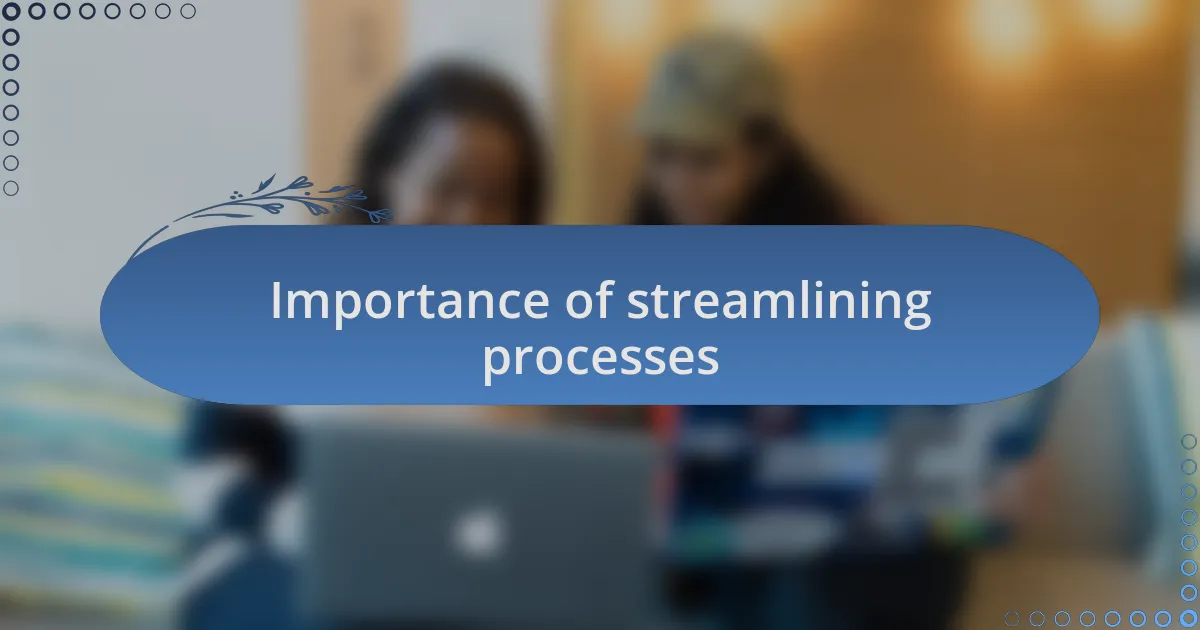
Importance of streamlining processes
Streamlining processes in web development is essential for enhancing productivity and maximizing efficiency. I recall a project where I meticulously mapped out each step, only to discover redundancies that wasted both time and resources. Realizing the importance of eliminating these unnecessary steps made a significant difference in meeting deadlines and maintaining team morale.
Additionally, a well-organized process fosters clearer communication among team members. When I embraced a more streamlined approach, I noticed that everyone was on the same page, which reduced confusion and errors. Have you ever been part of a project where miscommunication cost valuable hours? I certainly have, and it’s experiences like that that reinforce the need for structured workflows.
Ultimately, the importance of streamlining processes lies in the ability to adapt quickly to changes. In one instance, a sudden change in client requirements could have derailed the project. However, because we had a streamlined framework in place, we swiftly pivoted without compromising quality. Isn’t it remarkable how effective workflows can empower teams to rise to any challenge?
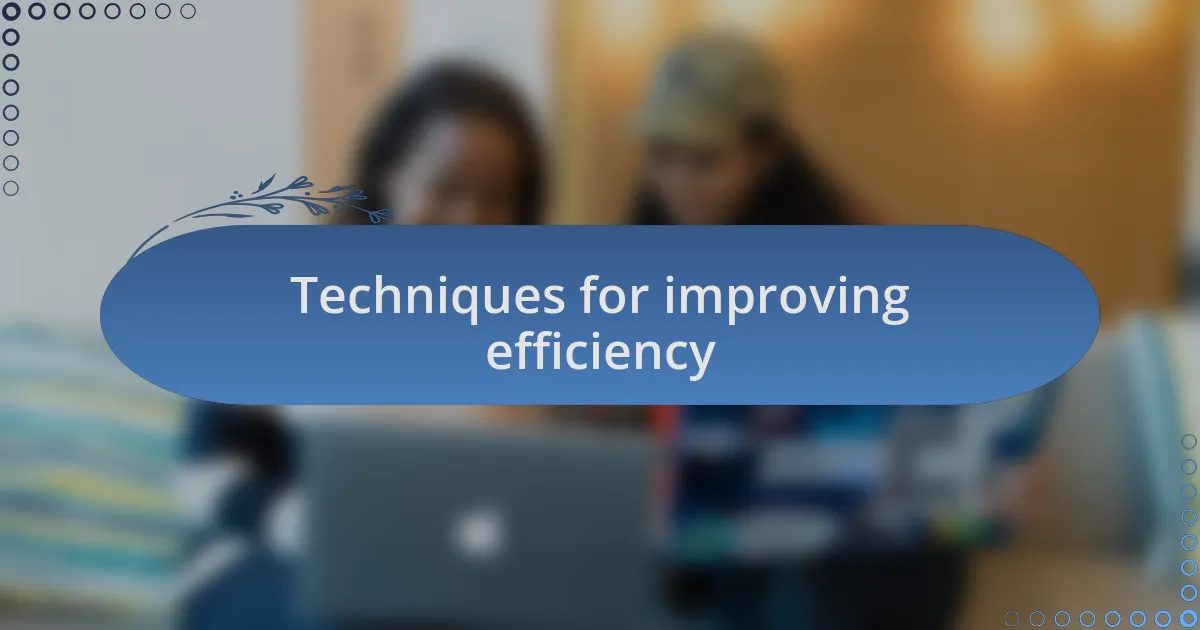
Techniques for improving efficiency
One effective technique I’ve found is employing version control systems like Git. When I first started using Git, I was amazed at how it transformed collaboration within my team. By allowing us to track changes and revert to previous versions, we reduced conflicts and confusion. Have you ever lost track of changes made by different team members? Using version control not only mitigates that issue but also fosters a culture of accountability.
Another method that significantly boosted my efficiency is adopting Agile methodologies. I remember when my team decided to break our projects into smaller iterations. This approach not only made the workload more manageable but also allowed for constant feedback and adjustment. It’s like taking a series of small, calculated steps instead of one long leap. Have you tried Agile? If not, I highly recommend giving it a shot; it could redefine the rhythm of your development process.
Automation tools are a game changer, too. I once automated repetitive tasks, such as testing and deployment, and the impact was revolutionary. What used to take days now takes mere hours, giving my team more space to innovate. Can you imagine what you could achieve if you freed up just a portion of your time? Embracing automation can dramatically shift your focus from mundane tasks to more strategic work.
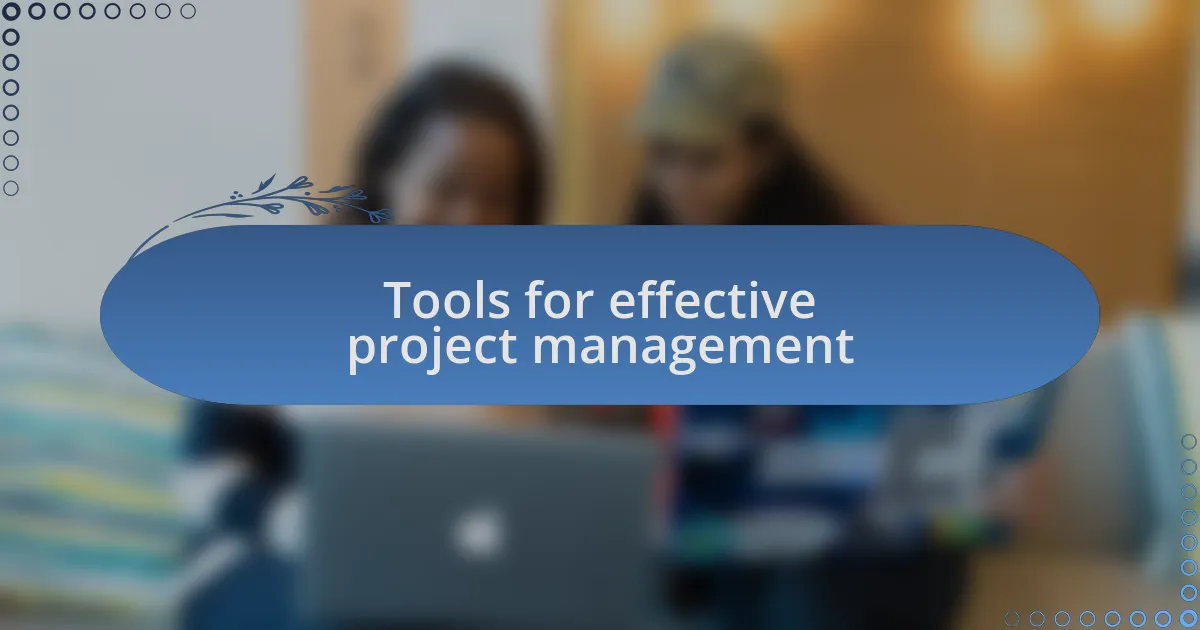
Tools for effective project management
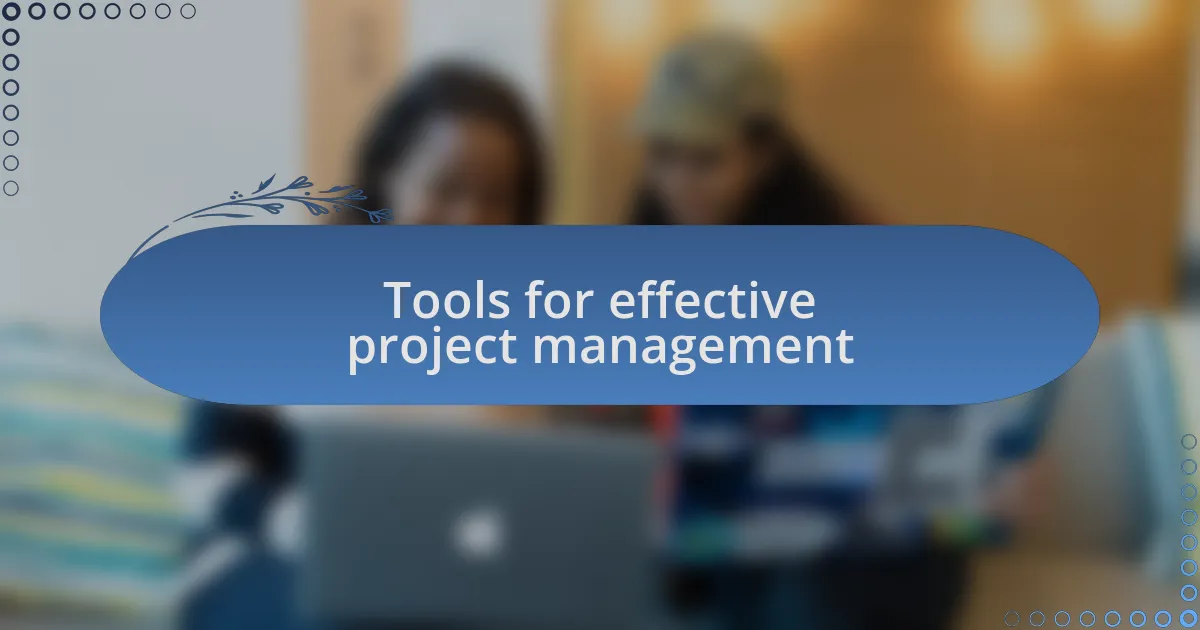
Tools for effective project management
One of my go-to tools for project management is Trello. Initially, I was skeptical about using a kanban board to visualize tasks, but once I started dragging cards between lists, it was like a light bulb went off. Have you ever felt overwhelmed by a project? Trello helped me break down my workload into bite-sized chunks, making it easier to focus and stay on track.
Asana is another powerful ally in my toolkit. I still remember the day I introduced it to my team; we went from chaos to clarity almost instantly. The way Asana allows for task assignments and setting deadlines keeps everyone accountable. Have you experienced the frustration of missed deadlines? With Asana, we not only track our progress, but we also celebrate our wins, which boosts morale and motivates the team.
I can’t forget to mention Slack for team communication. It revolutionized how we interact. There’s something special about having dedicated channels for different projects and quick check-ins. Have you ever found yourself lost in endless email threads? With Slack, the conversations are streamlined, leading to quicker decisions and a more connected team. It truly enhances collaboration and speeds up the overall workflow.
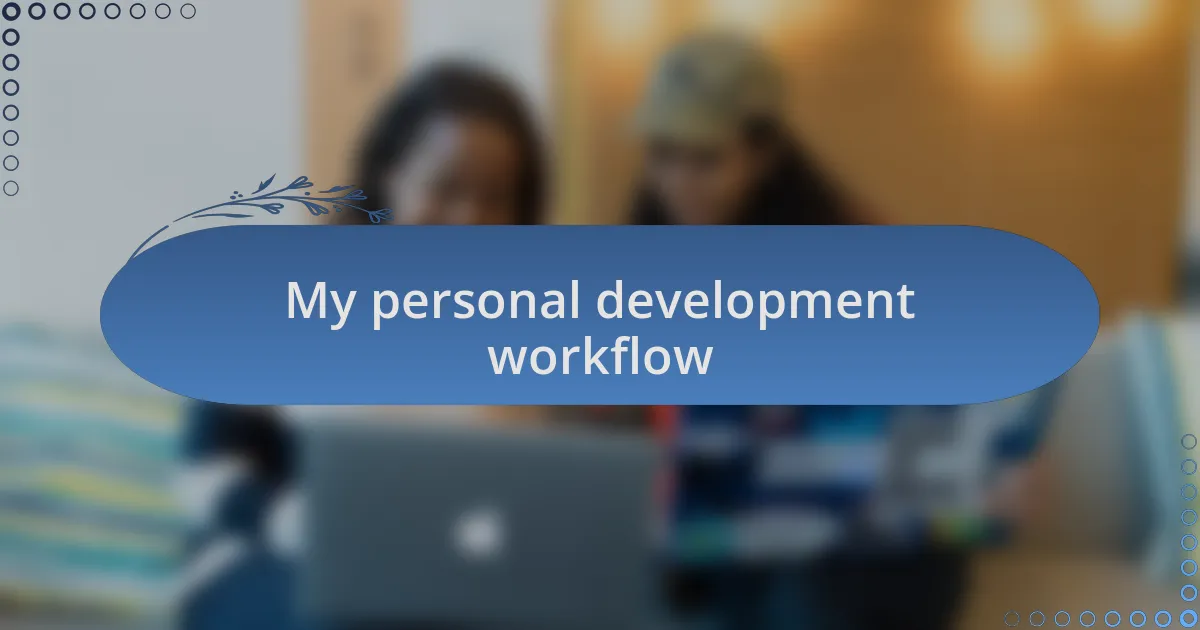
My personal development workflow
My personal development workflow has evolved into a structured yet flexible routine. At the heart of it, I start each day by reviewing my tasks on Trello. I recall a time when I would jump straight into coding without a clear plan, often leading to frustration and disorganization. Now, that initial moment of clarity sets the tone for my productivity, helping me prioritize what truly matters.
When I’m deep in the design phase, I often turn to Figma to create prototypes. I remember my first big project where I didn’t take the time to prototype; the feedback was rough because the client couldn’t visualize my ideas. Now, I carve out moments specifically for mock-ups. This not only saves time in the long run but ensures my clients are on board with the vision before we dive into development. Have you ever wished you could rewind time and fix a miscommunication? Prototyping has become my safety net.
Lastly, as I wrap up my day, I use a reflection journal. This simple habit allows me to jot down what went well and what could be improved. I vividly remember a time when I finished a project but felt a nagging sense that I hadn’t done my best work. By reflecting, I’ve grown to see my mistakes as learning opportunities rather than setbacks. How often do we overlook the power of self-reflection in our growth? For me, this practice enriches my process and fuels my passion for continual improvement.

Lessons learned from my experience
There’s a profound lesson I’ve absorbed about the importance of communication within the team. I once found myself stuck on a project, wrestling with a feature that seemed to have no end in sight. It wasn’t just about my coding skills; it dawned on me that I had failed to clearly communicate my challenges to my colleagues. Now, I make it a point to check in regularly and share my progress and roadblocks. This simple act of open dialogue has transformed not just my efficiency but also the camaraderie in our workspace.
Another key realization struck me during a hectic sprint when I was juggling multiple projects. I remember feeling overwhelmed, unsure of which task deserved my attention the most. It was in those chaotic moments that I started using techniques like the Pomodoro Technique, which helps me break tasks into manageable chunks. Suddenly, that massive mountain of work turned into a series of small, conquerable hills. Isn’t it fascinating how a structured approach can turn chaos into productivity?
Lastly, I’ve learned that embracing feedback is essential for growth. In the past, I viewed criticism as a personal attack, which stifled my creativity and willingness to take risks. I once submitted a feature that I was particularly proud of, only to receive mixed reviews. My initial reaction was defensiveness, but over time, I’ve come to cherish constructive feedback as an opportunity to refine my work. Now, rather than fearing critique, I actively seek it. What if we all viewed feedback as a gift rather than a setback? In my experience, it’s a game-changer that fuels improvement and innovation.